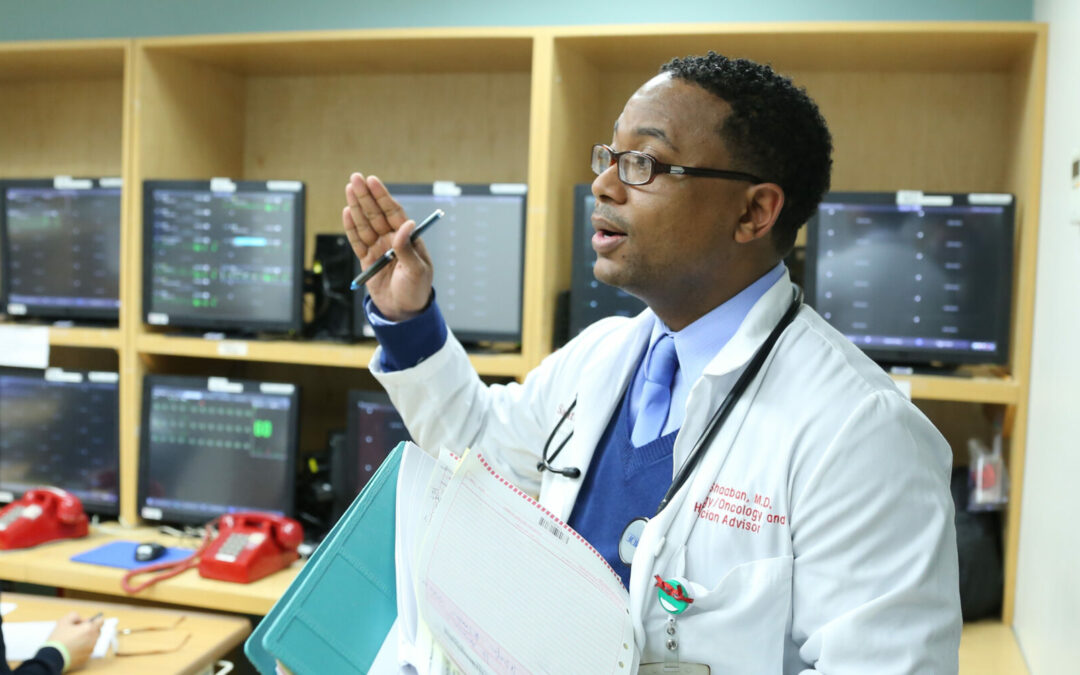Read this article as it originally appeared Nov. 12, 2020 on TAPintoNewark.
As the Thanksgiving holiday approaches, the number of positive COVID-19 cases is climbing.
Just this week, New Jersey Gov. Phil Murphy imposed new restrictions on seating and hours for restaurants, bars, clubs, and lounges. In Newark, where the number of COVID-19 cases has skyrocketed, especially in the North and East wards, Mayor Ras Baraka imposed even tighter restrictions.
While none of the restrictions apply to private gatherings, readers may be wondering whether it’s a good idea to host a Thanksgiving gathering, or whether to attend one outside of their homes.
Dr. Hamid Shaaban, the chief medical officer at Saint Michael’s Medical Center, said the CDC recently issued guidelines that can help answer many of the questions hosts and guests may have about the safety of gathering with friends and family.
“A few months ago, I had hoped we would have flattened the curve enough to allow us to resume holiday gatherings,” Dr. Shaaban said. “Unfortunately, that didn’t happen and this Thanksgiving will sadly coincide with a major coronavirus surge.”
Dr. Shaaban said it’s understandable that friends and family want to connect around the holidays, especially after spending much of the year in social isolation. But he said a sacrifice this Thanksgiving may end up saving the life of a loved one.
“Informal gatherings of friends and extended family – gatherings like Thanksgiving – are exactly what’s causing the latest surge,” Dr. Shaaban said.
Based on CDC recommendations, Dr. Shaaban said hosts should consider limiting their celebrations to members of their own household, which includes people who share common spaces under one roof. Shaaban suggests that other guests could attend virtually.
“Consider virtual family celebrations if safety precautions cannot be assured,” Dr. Shaaban said. “These guidelines might seem extreme for many New Jerseyans, especially at a time when we’ve already made innumerable sacrifices. However, we can’t let those sacrifices go to waste. Not now.”
According to the CDC, there are several factors that contribute to the risk of spreading or getting COVID-19 at small, in-person gatherings.
If the gathering is held in an area where there is high levels of COVID-19 cases, or the guests are coming from areas of high COVID-19 levels, the risk of transmitting the disease is high.
“In New Jersey, Essex County and Newark, we are in an area with high COVID-19 levels, so the risk of transmitting or getting the disease from an in-person gathering is extremely high,” Dr. Shaaban said.
New Jersey reported 3,517 new cases of COVID-19 on November 12, a seven-fold increase from the 487 new cases reported on the same day two months earlier. Essex County remains the highest in the state with 28,872 cases and 1,932 COVID-19-related deaths. Newark’s COVID-19 positivity rate is 19%, more than double New Jersey’s 7.74% positivity rate.
College students and others traveling from out-of-state can be potential virus spreaders.
“I’m particularly worried about the young people who are more likely to be asymptomatic or mildly symptomatic but can still spread the virus,” Dr. Shaaban said. “Something to consider is self-quarantining or testing ahead of returning home or just socializing with family outdoors. This may sound desperate but these are desperate times.”
New Jersey has issued an advisory to individuals traveling to New Jersey from 45 states or territories with significant community spread of COVID-19 to quarantine for a 14-day period from the time of last contact within the identified state or territory. The only states not on the list are New York, Connecticut, Pennsylvania and Delaware.
Dr. Shaaban said indoor gatherings, especially those with poor ventilation, pose a higher risk of transmission.
“If you could hold your Thanksgiving dinner outside, that would be a viable option, but here in New Jersey, it’s usually pretty cold on Thanksgiving and only the hardiest souls would make it through dinner without wanting to come inside to warm up,” Dr. Shaaban said.
Dr. Shaaban said traveling to and from a gathering, especially on public transportation, is another way to get exposed to the coronavirus.
While the CDC does not put a limit on the number of people who should attend an indoor gathering, Dr. Shaaban said size should be determined based on the ability of guests to remain socially distant.
“You should have enough space to allow guests from different households to stay six feet apart at all times,” Dr. Shaaban said. “And of course, your guests should wear masks, except when eating, and they should wash their hands frequently.”
If you are considering holding an indoor gathering, it’s best to keep windows open to allow for circulation, according to the CDC.
Dr. Shaaban said hosts should also consider limiting the amount of alcohol served during dinner as it may impair the judgement of guests and make it more difficult to practice safety measures. Also, guests should be discouraged from shouting or singing as such activity could transmit airborne droplets that may contain the coronavirus.
If anyone at the Thanksgiving gathering later tests positive for coronavirus, Dr. Shaaban said it’s the host’s obligation to call every guest who attended to let them know. Everyone who attended must quarantine for 14 days.
“There are no easy answers when it comes to holiday gatherings,” Dr. Shaaban said. “But if we follow the guidelines and recommendations of the CDC, the risk of spreading the disease decreases. But even taking these safety measures, it’s still not a 100 percent guarantee. There is a risk and you have to weigh whether that risk is worth it.”
Dr. Shaaban said people need to sacrifice just a little longer before a return to normal.
“With the advent of multiple treatment options and the vaccine, there is hope that is going to end soon and that is something to be truly thankful for,” Dr. Shaaban said.


